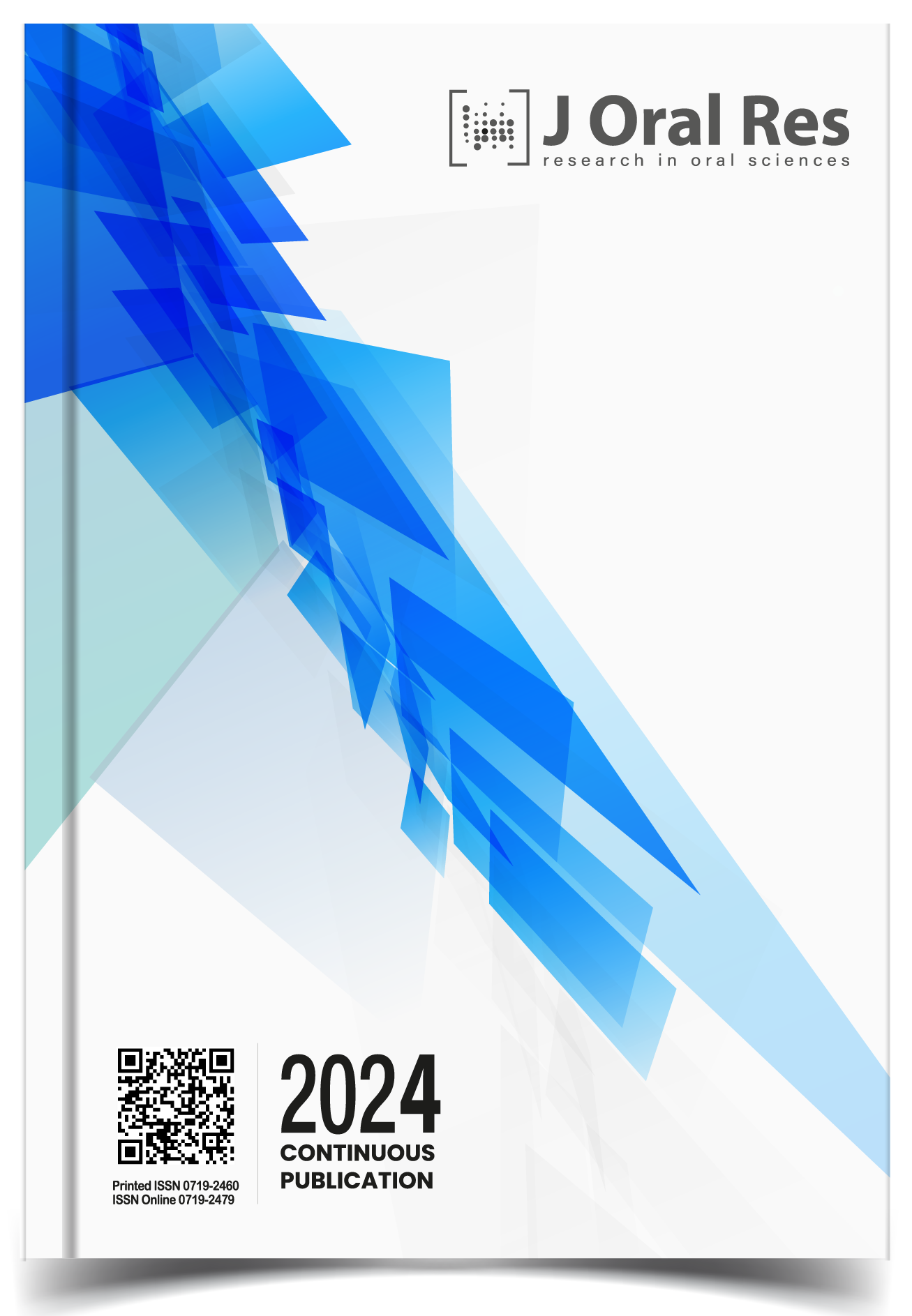Analysis of primary caregivers’ knowledge concerning the cariogenic risk associated with the use of pediatric liquid medications
Abstract
Introduction: Pediatric liquid medications (PLM) are frequently administered to children, yet their usage may contribute to the onset of dental caries. Despite its prevalence, there is a notable scarcity of scientific research regarding caregivers’ knowledge of this potential cariogenic risk.
Objective: This study aims to assess the knowledge of the main caregivers of children aged 5 to 12 years concerning the cariogenic potential associated with the use of PLM.
Materials and Methods: A cross-sectional analytical obser-vational study involving 152 primary caregivers of children aged 5 to 12 was conducted. Data were collected on caregivers’ perceptions of the cariogenic risk associated with PLMs and their consumption habits. The study also assessed oral hygiene routines and evaluated the level of information provided by healthcare professionals.
Results: Research findings indicated a significant lack of awa-reness among primary caregivers regarding the cariogenic risks of PLMs, with 78.95% being unaware of these risks and 47.37% unaware of the sugars present in such medications. Additionally, a high rate of PLM consumption was observed, with 63% of caregivers using them in the last year. The study underscored a notable absence of guidance from healthcare professionals, as 91.45% of the caregivers stated that they had not received instructions on tooth brushing after the administration of the PLM.
Conclusions: The study highlights a significant lack of awa-reness among primary caregivers regarding the cariogenic risks associated with the ingestion of pediatric liquid medications. This deficit in information and preventive measures presents a substantial obstacle to children’s oral health. To address this issue, it is crucial for healthcare professionals to offer comprehensive guidance and promote preventive measures.
Keywords: Dental Caries; Knowledge; Caregivers; Child; Pharmaceutical Preparations; Oral hygiene.
References
2. Ministerio de Salud. Análisis de situación de salud bucal en Chile. 2010.
3. Giacaman R. Sugars and beyond. The role of sugars and the other nutrients and their potential impact on caries. Oral Dis. 2018;24(7):1185–97. https://doi.org/10.1111/odi.12778
4. Neves BG, Farah A, Lucas E, de Sousa VP, Maia LC. Are paediatric medicines risk factors for dental caries and dental erosion? Community Dent Health. 2010;27(1):46-51. PMID: 20426261.
5. Subramaniam P, Nandan N. Cariogenic Potential of Pediatric Liquid Medicaments- An in vitro Study. Journal of Clinical Pediatric Dentistry. 2012;36(4):357–62. https://doi.org/10.17796/jcpd.36.4.nt11584612462t84
6. Jung EH, Jun MK. Evaluation of the Erosive and Cariogenic Potential of Over-the-Counter Pediatric Liquid Analgesics and Antipyretics. Children. 2021;8(7):611. https://doi.org/10.3390/children8070611
7. Taji S, Seow WK. A literature review of dental erosion in children. Aust Dent J. 2010 Dec;55(4):358-67; quiz 475. doi: 10.1111/j.1834-7819.2010.01255.x. PMID: 21133936.
8. Singana T, Suma NK. An In Vitro Assessment of Cariogenic and Erosive Potential of Pediatric Liquid Medicaments on Primary Teeth: A Comparative Study. Int J Clin Pediatr Dent. 2020 Nov-Dec;13(6):595-599. doi: 10.5005/jp-journals-10005-1824. PMID: 33976481; PMCID: PMC8060941.
9. Nirmala SV, Popuri VD, Chilamakuri S, Nuvvula S, Veluru S, Minor Babu MS. Oral health concerns with sweetened medicaments: Pediatricians’ acuity. J Int Soc Prev Community Dent. 2015 Jan-Feb;5(1):35-9. doi: 10.4103/2231-0762.151973. PMID: 25767765; PMCID: PMC4355848.
10. Nishide S, Yoshihara T, Hongou H, Kanehira T, Yawaka Y. Daily life habits associated with eveningness lead to a higher prevalence of dental caries in children. J Dent Sci. 2019;14(3):302-308. doi: 10.1016/j.jds.2019.01.015. Epub 2019 Apr 4. PMID: 31528259; PMCID: PMC6739456.
11. Zafar R, Urooj A, Masood S. Dental Caries in Relation to Sugar Consumption among Children - A Study from Southern Punjab, Pakistan. BioMedica. 2021;37(2):110–3.
12. Gowdar IM, Aldamigh SA, Alnafisah AM, Wabran MS, Althwaini AS, Alothman TA. Acidogenic Evaluation of Pediatric Medications in Saudi Arabia. J Pharm Bioallied Sci. 2020;12(Suppl 1):S146-S150. doi: 10.4103/jpbs.JPBS_46_20. Epub 2020 Aug 28. PMID: 33149446; PMCID: PMC7595467.
13. Goyal A, Rani V, Manjunath BC, Rathore K. Relationship between pediatric liquid medicines (PLMs) and dental caries in chronically ill children. Padjadjaran J Dent. 2019;31(3):167.
14. Gupta M, Panda S. Cariogenic Potential of the commonly Prescribed Pediatric Liquid Medicaments in Kingdom of Saudi Arabia: An in vitro Study. J Contemp Dent Pract. 2017;18(4):307-311. doi: 10.5005/jp-journals-10024-2036. PMID: 28349909.
15. Taqi M, Razak I, Ab-Murat N. Sugar consumption and caries occurrence among Pakistani school children. 2018.
16. Baghlaf K, Muirhead V, Moynihan P, Weston-Price S, Pine C. Free Sugars Consumption around Bedtime and Dental Caries in Children: A Systematic Review. JDR Clin Trans Res. 2018;3(2):118–29.
17. Sulastri S, Sulistyani H. The effect of tooth brushing before and after eating on salivary pH of elementary school students. Int J Community Med Public Health. 2022;9(3):1237.
18. Stone VN, Xu P. Targeted antimicrobial therapy in the microbiome era. Mol Oral Microbiol. 2017.
19. George Mathew M, Gurunathan D. Evaluation Of Knowledge, Attitude and Practice Of Pediatricians Towards Long-Term Liquid Medicaments And Its Association With Dental Health Journal for Educators. JETT. 2022;13(6).
20. Acharya S, Ullah A, Godhi B, Setya G, Phukela S, Singh B. Knowledge, attitude, and practice of pediatricians regarding pediatric liquid medicaments on long-term oral health: A cross-sectional study in bhubaneswar, odisha. J Pharm Bioallied Sci. 2019;11(7):S540–6.
21. Babu KL, Rai K, Hedge AM. Pediatric liquid medicaments--do they erode the teeth surface? An in vitro study: part I. J Clin Pediatr Dent. 2008 Spring;32(3):189-94. doi: 10.17796/jcpd.32.3.j22m7t8163739820. PMID: 18524267.

This work is licensed under a Creative Commons Attribution 4.0 International License.
This is an open-access article distributed under the terms of the Creative Commons Attribution License (CC BY 4.0). The use, distribution or reproduction in other forums is permitted, provided the original author(s) and the copyright owner(s) are credited and that the original publication in this journal is cited, in accordance with accepted academic practice. No use, distribution or reproduction is permitted which does not comply with these terms. © 2024.











